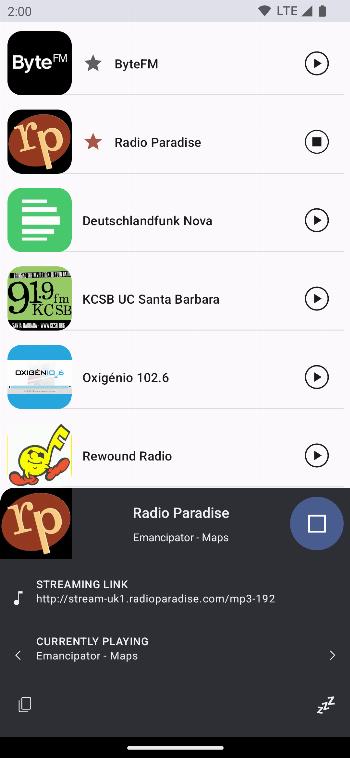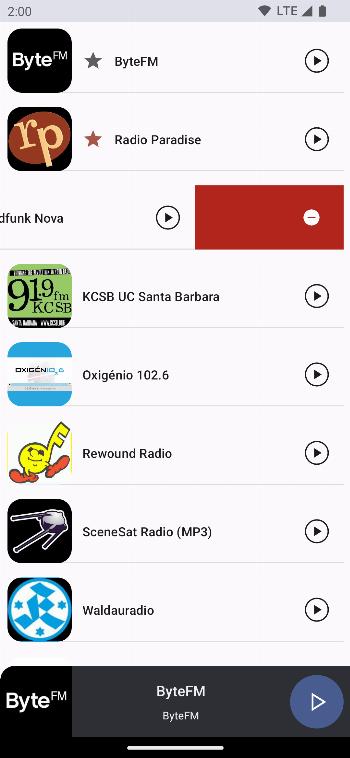Transistor - Simple Radio App
Transistor is an app for listening to radio stations over the internet.
| AppID: | org.y20k.transistor |
| Author: | y20k |
| License: | MIT |
| InRepoSince: | 2023-06-12 |
| LastRepoUpdate: | 2025-11-16 |
| LastAppUpdate: | 2025-11-16 |
| LastVersion: | 4.3.5 |
| Categories: | Multimedia |
| APK source: | Codeberg/Forgejo/Gitea |
| Google Play: | Check if it's there |
Transistor is a radio app with a minimalistic approach, that may not be to everyone's liking. It has no radio station discovery feature. Transistor only offers a very simple search option and it imports audio streaming links, when you tap on them in a web browser.
FREQUENT QUESTIONS
- HOW CAN I ADD A RADIO STATION
- There are three ways to add a radio station to Transistor: Use Search, add playlist file address (M3U, PLS), enter a raw stream address.
- WHERE DO THE RADIO STATION SEARCH RESULTS COME FROM?
- Transistor searches the radio-browser.info online database. You can help out the radio-browser.info community by adding the missing station (http://www.radio-browser.info/gui/#!/add) to their database.
- HOW CAN I CURATE THE RADIO STATION LIST?
- Use the swipe gesture to delete a radio station from the list. Further editing options can be enabled in Settings. If enabled, tap and hold a radio station to edit its name, image or streaming link.
WhatsNew:
# v4.3.5 - The Width of a Circle
**2025-11-16**
- fixed a bug where renaming a station would cause the app to crash (THX Ely)
Hint: This app is available in both, F-Droid Main and IzzyOnDroid repos. For details on this, please see here.
While you can download the APKs here directly, you should preferably use an F-Droid client so the app stays up-to-date on your device. Some clients have this repo enabled by default, e.g. Neo Store, Droid-ify, or, of course, the IzzyOnDroid client by Sunil. With others (like the official client) you'll have to add this repo manually (see the hint on top of the package list for how to do that).





